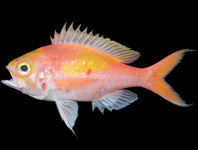Abstract
Cyprinids of the genus Luciobarbus are the most abundant and widespread fishes in most freshwater ecosystems in the Maghreb. In the Mediterranean basin of Morocco, Algeria and Tunisia, all species of Luciobarbus—with exception of L. guercifensis—are superficially very similar and are distinguished mostly by minor morphometric characters. Molecular characters distinguish all species well and nine species are recognised from the area, two of them described here. Luciobarbus chelifensis, from the Chelif River drainage in Algeria, is distinguished by having 41–43+1–2 lateral line scales and a very short anal fin (18–19% SL). Luciobarbus mascarensis, from the Macta River drainage in Algeria, is distinguished by having usually 41+1–2 lateral line scales, a long anal-fin (19–22%) and a short caudal peduncle (15–17% SL). An identification key is given for all African Mediterranean Luciobarbus species except for L. callensis and L. rifensis, which could not be distinguished.
References
Astrin, J.J., Stüben, P.E., Misof, B., Wägele, J.W., Gimnich, F., Raupach, M.J. & Ahrens, D. (2012) Exploring diversity in cryptorhynchine weevils (Coleoptera) using distance-, character- and tree-based species delineation. Molecular Phylogenetics and Evolution, 63, 1–14.
https://doi.org/10.1016/j.ympev.2011.11.018Bazinet, A.L., Zwikhl, D.J. & Cummings, M.P. (2014) Agateway for phylogenetic analysis powered by grid computing featuring GARLI 2.0. Systematic Biology, 63, 812–818.
https://doi.org/10.1093/sysbio/syu031Brahimi, A., Tarai, N., Benhassane, A., Henrard, A. & Libois, R. (2016) Genetic and morphological consequences of Quaternary glaciations. A relic barbel lineage (Luciobarbus pallaryi, Cyprinidae) of the Guir Basin (Algeria). Comptes Rendus Biologie, 339, 83–98.
https://doi.org/10.1016/j.crvi.2015.12.003Casal-Lopez, M., Perea, S., Yahyaoui, A. & Doadrio, I. (2015) Taxonomic review of the genus Luciobarbus Heckel; 1843 (Actinopterygii, Cyprinidae) from northwestern Morocco with the description of three new species. Graellsia, 71, 1–24
Doadrio, I., Casal-López, L. Perea, S. & Yahyaoui, A. (2016b) Taxonomy of rheophilic Luciobarbus Heckel, 1842 (Actinopterygii, Cyprinidae) from Morocco with the description of two new species. Graellsia, 72, 1–17.
https://doi.org/10.3989/graellsia.2015.v71.135Doadrio, I., Casal-López, M. & Perea, S. (2016a) Taxonomic remarks on Barbus moulouyensis pellegrin, 1924 (Actinopterygii, Cyprinidae) with the description of a new species of Luciobarbus Heckel, 1843 from Morocco. Graellsia, 72, 1–24.
https://doi.org/10.3989/graellsia.2016.v72.174Felsenstein, J. (1981) Evolutionary tree from DNA sequences, a maximum likelihood approach, Journal of Molecular Evolution, 17, 368–376.
https://doi.org/10.1007/BF01734359Geiger, M.F., Herder, F., Monaghan, M.T., Almada, V., Barbieri, R., Bariche, M., Berrebi, P., Bohlen, J., Casal-Lopez, M., Delmastro, G.B. Denys, G.P., Dettai, A., Doadrio, I., Kalogianni, E., Kärst, H., Kottelat, M., Kovačić, M., Laporte, M., Lorenzoni, M., Marčić, Z., Özuluğ, M., Perdices, A., Perea, S., Persat, H., Porcelotti, S., Puzzi, C., Robalo, J., Šanda, R., Schneider, M., Šlechtová, V., Stoumboudi, M., Walter, S., Freyhof, J. (2014) Spatial heterogeneity in the Mediterranean Biodiversity Hotspot affects barcoding accuracy of its freshwater fishes. Molecular Ecology Resources, 14, 1210–1221.
https://doi.org/10.1111/1755-0998.12257Gouy, M., Guindon, S. & Gascuel, O. (2010) SeaView Version 4: A Multiplatform Graphical User Interface for Sequence Alignment and Phylogenetic Tree Building. Molecular Biolology and Evolution, 27, 221–224.
https://doi.org/10.1093/molbev/msp259Hasegawa, M., Kishino, H. & Yano, T. (1985) Dating of the human-ape split by a molecular clock by michondrial DNA. Journal of Molecular Evolution, 22, 160–174.
https://doi.org/10.1007/BF02101694Iguchi, K., Tanimura, Y. & Nishida, M. (1997) Sequence divergence in the mtDNA control region of amphidromous and landlocked forms of ayu. Fish Sciences, 63, 901–905.
Katoh, K. & Standley, D.M. (2013) MAFFT Multiple sequence alignment Software Version 7. Improvements in performance and usability. Molecular Biology and Evolution, 30, 772–780.
https://doi.org/10.1093/molbev/mst010Kimura, M. (1980) Estimation of evolutionary distances between homologous nucleotide sequences. Proceedings of the National Academy of Sciences USA, 78, 454–458
https://doi.org/10.1073/pnas.78.1.454Lanave, C., Preparata, G., Saccone, C. & Serio, G. (1984) A new method for calculating evolutionary substitution rates, Journal of Molecular Evolution, 20, 86–93.
https://doi.org/10.1007/BF02101990Lanfear, R., Frandsen, P.B., Wright, A.M., Senfeld, T. & Calcott, B. (2017) PartitionFinder 2: new methods for selecting partitioned models of evolution for molecular and morphological phylogenetic analyses. Molecular Biolology and Evolution, 34, 772–773.
https://doi.org/10.1093/molbev/msw260Machordom, A. & Doadrio, I. (2001) Evidence of a cenozoic Betic-Kabilian connection based on freshwater fish phylogeography (Luciobarbus, Cyprinidae). Molecular Phylogenetics and Evolution, 18, 252–263.
https://doi.org/10.1006/mpev.2000.0876Myers, N., Mittermeier, R., Mittermeier, C., da Fonseca, G. & Kent, J. (2000) Biodiversity hotspots for conservation priorities. Nature, 403, 853–858.
https://doi.org/10.1038/35002501Nishida, M., Ohkawa, T. & Iwata, H. (1998) Methods of analysis of genetic population structure with mitochondrial DNA markers. Fish Genetics and Breeding Science, 26, 81–100.
Palumbi, S.R. (1996) Nucleic acids II: The polymerase chain reaction. In: Hillis, D.M., Moritz, C. & Mable, B.K. (Eds.), Molecular Systematic. 2nd Edition. Sinauer, Sunderland, MA, pp. 5–247.
Pellegrin, J. (1920) Poissons du Maroc recueillis par M. C. Alluaud. Bulletin du Museum d°Histoire Naturelle, Paris, 26, 612–613.
https://doi.org/10.5962/bhl.part.1209Pellegrin, J. (1939) Les barbeaux de l°Afrique du Nord française: description d’une espèce nouvelle. Bulletin de la Société, des Sciences Naturelles du Maroc, 19, 1–4.
Perdices, A. & Doadrio, I. (2001) The molecular systematics and biogeography of the European cobitids based on mitochondrial DNA sequences. Molecular Phylogenetics and Evolution, 19, 468–478.
https://doi.org/10.1006/mpev.2000.0900Rambaut, A. (2009) FigTree v1.4.2. Available from: http://tree.bio.ed.ac.uk/software/figtree/ (accesed 2 May 2017)
Rodríguez, F., Oliver, J.L., Marín, A. & Medina, J.R. (1990) The general stochastic model of nucleotide substitution. Journal of Theoretical Biology, 142 (4), 485–501.
https://doi.org/10.1016/S0022-5193(05)80104-3Ronquist. F., Teslenko, M., Mark, P., Ayres, D.L., Darling, A., Höhna, S., Larget, B., Liu, L., Suchard, M.A. & Huelsenbeck, J.P. (2012) MrBayes 3.2. Efficient Bayesian phylogenetic inference and model choice across a large, model space. Systematic Biology, 61, 539–542.
https://doi.org/10.1093/sysbio/sys029Sukumaran, J. & Holder, M.T. (2010) DendroPy, a Python library for phylogenetic computing. Bioinformatics, 26, 1569–1571.
https://doi.org/10.1093/bioinformatics/btq228Sukumaran, J. & Holder, M.T. (2015) SumTrees. Phylogenetic tree Summarization, 4.0.0 Available from: https://github.com/jeetsukumaran/Dendrophy (accessed 2 May 2017)
Talavera, G. & Castresana, J. (2007) Improvement of phylogenies after removing divergent and ambiguously aligned blocks from protein sequence alignments. Systematic Biology, 56, 564–577.
https://doi.org/10.1080/10635150701472164Tavaré, S. (1986) Some probabilistic and statistical problems in the analysis of DNA sequences. Lectures on Mathematics in the Life Sciences (American Mathematical Society), 17, 57–86.
Tsigenopoulos, C.S., Durand, J.D., Ünlü, E. & Berrebi, P. (2003) Rapid radiation of the Mediterranean Luciobarbus species (Cyprinidae) after the Messinian salinity crisis of the Mediterranean Sea, inferred from mitochondrial phylogenetic analysis. Biological Journal of the Linnean Society, 80, 207–222.
https://doi.org/10.1046/j.1095-8312.2003.00237.x

